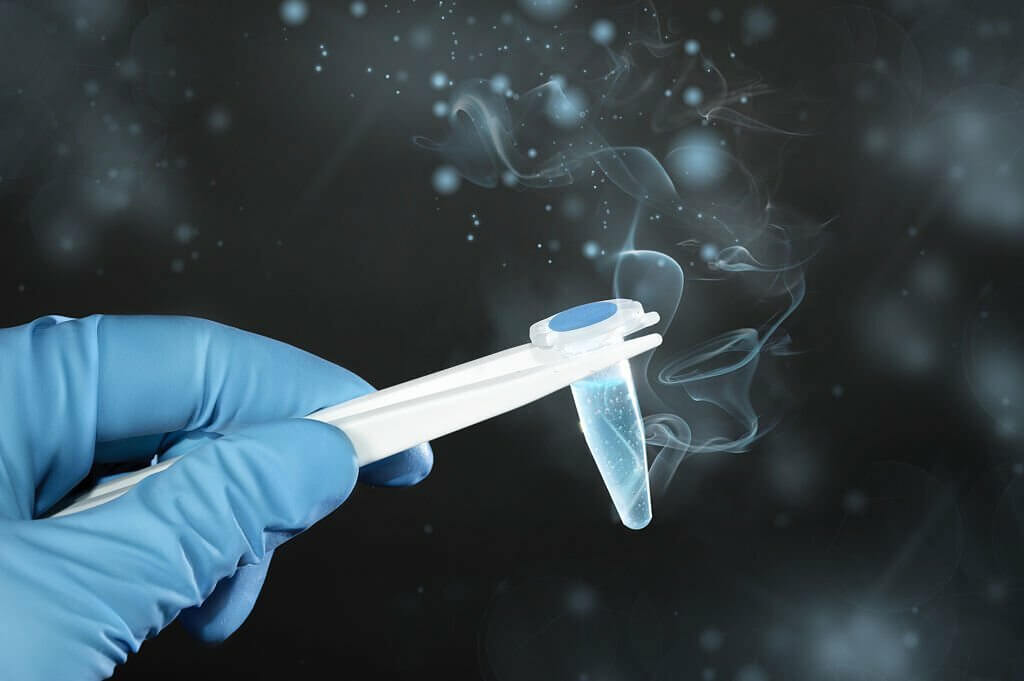The Viral Transport Medium: Keeping Viruses Stable Outside the Fridge

Transporting viruses at room temperature is a game changer. But how can we stop them degrading when they prefer the cold?
Viruses don't like the heat. They remain stable when kept chilled at fridge-like temperatures of 2-8°C. But transporting clinical samples in cumbersome and expensive cold boxes has drawbacks. Cool conditions are impractical for remote areas with poor facilities. So scientists have been investigating how to keep viruses intact at ambient temperatures during transport. The idea is to develop transport media that can stabilize viruses for diagnosis and research.
What Makes Viruses Decay Faster at Warmer Temperatures?
Viruses are simply packages of genetic material, either RNA or DNA, inside a protein shell. Unlike living cells, they can't repair damage to their structure or genetic code. Three main factors make viruses break down faster as it gets warmer:
-
1. Heat directly destabilizes virus particles, making them fall apart.
-
2. Warmth causes nucleic acids like RNA and DNA to degrade. For example, above 42°C the double helix structure of DNA starts to unravel.
-
3. Enzymes called nucleases, which chew up RNA and DNA, work faster at higher temperatures.
This explains why cold preserves viruses for longer. Cooling biological samples essentially puts the contents into slow motion, protecting delicate viruses.
Stopping Viruses Infecting Transport Workers
When diagnosing virus infections, doctors take swabs or blood samples from patients. These clinical specimens then need to be transported to a laboratory for analysis. But transport staff risk catching the infection from live virus particles.
So there's a major plus to developing transport media that can quickly inactive viruses at point of collection. This eliminates the biohazard, making transport safer. Inactivation also enables transport at ambient temperature, if the medium can prevent nucleic acids in the sample from degrading.
Chemicals That Preserve Viral Genetic Material
Many chemicals have been tested to keep viral RNA and DNA intact outside cold conditions. Promising methods use chemicals that:
-
- Denature proteins that chew up nucleic acids.
-
- Bind and protect viral genetic material.
-
- Neutralize nuclease enzymes.
For example, PrimeStore® MTM contains reagents that inactivate viruses within seconds of contact, while preserving RNA for 30 days at 25°C.
Carrier Media for Room Temperature Transport
As well as virus-killing reagents, transport media need to contain stable pH buffers. And protective proteins, salts or sugars to mimic the intracellular environment. This maintains the integrity of any viral genetic material during transit.
Many formulations have been tested. One study compared Universal Transport Medium (UTM) and M4-RT medium for influenza, RSV and other viruses. UTM performed well, detecting viruses after transport for 96 hours at 20°C.
Absorbing Substances to Keep Viruses Intact
Some media use absorbent powders to mop up destructive nucleases and stabilize viruses. Charcoal, bentonite clay and FTA filter paper have shown promise. Bentonite forms salts that protect viral capsids at room temperature. One medium using bentonite preserved coxsackievirus infectivity for 21 days.
FTA filter paper inactivates viruses on contact. Avian influenza RNA remained detectable for 5 months after applying to FTA cards. The cards make collection simple - just stamp onto samples.
Live Cells Can Host Viruses in Transit
Growing cell monolayers inside transport devices provides viral particles with a living host. One commercial product called The Transporter takes this approach. It uses human cell cultures in vials to keep herpes simplex virus viable for diagnosis. Compared to plain buffer, The Transporter gave a 92% recovery rate even after ambient temperature transport.
The Future is Ambient Temperature and Virus Inactivation
Cold chain transport causes diagnostic delays. And live viruses pose an infection risk before analysis. New transport media that inactivate viruses while stabilizing nucleic acids for PCR diagnosis are a major advance. They improve safety for transport staff, and enable cheaper delivery from remote settings.
The focus now is optimizing reagents that protect viral RNA/DNA outside cold conditions. Absorbent powders that mop up damaging enzymes show particular promise. As do certified means of viral inactivation at point of collection. Combining these approaches can make ambient temperature transport of viral test samples a viable option. Greatly increasing access to PCR diagnosis, and improving global health outcomes as a result.
Click to View → Mantacc DSK-F10-96A Sampling Kit with Non-inactivated Transport Medium
References
Dsa OC, Kadni TS, N S. From cold chain to ambient temperature: transport of viral specimens- a review. Ann Med. 2023;55(2):2257711. doi: 10.1080/07853890.2023.2257711. Epub 2023 Sep 19. PMID: 37725901; PMCID: PMC10512818.
Related Posts
The Hidden Truth of Group B Streptococci Survival in Amies Transport Medium
Why Charcoal is Crucial in Amies Transport Medium for Gonorrhea Detection
Amies Transport Medium: Ensuring Sterility and Stability at Room Temperature
Your One-stop Source For Everything Amies Transport Medium
Everything You Need To Know About Cary-Blair Transport Medium
Findings About Dog Antimicrobial Resistance in Growth Medium
A Full Comparison of Inactivated and Non-inactivated VTM
Transport Medium: A Vital Solution for Preserving Specimens









